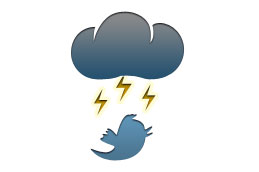Save Yourself: Crisis Communication in a Social Media World
 When it comes to online communications, crisis management seems to stymie even the savviest organizations. Just look to Netflix last year or Penn State this year for examples of how not to get out in front of a crisis in an online world.
When it comes to online communications, crisis management seems to stymie even the savviest organizations. Just look to Netflix last year or Penn State this year for examples of how not to get out in front of a crisis in an online world.
Thanks to Social Media, your audience has its own bullhorn with which to blast its own messaging. And communication within a many-to-many model moves incredibly fast.
So, what can you do about it?
Social Media is the New Press Conference
Thanks to the Web, everything happens instantly. There’s no escape — if something goes wrong within your company, people will know it and spread it immediately.
Thanks to the Web, there’s no time in the face of crisis to schedule a press conference for your prepared statement. You need to get your message online as soon as legally approved, before others start doing the talking for you.
Which brings me to my next point…
Social Media Airs Your Dirty Laundry More Effectively
When amplified by Social distribution, crises can quickly spin out of control. The noisiest influencers will air your dirty laundry to all of cyberspace, and the rest of the Web will react. If for nothing else, build a Social presence to address many-to-many communications in times of peril.
Even if your company has decided not to participate in Social Media, you can’t prevent others from writing whatever they want about you. Give people a hub through which to congregate and converse. Even better: engage with those people. This allows you to respectfully tell your side of the story.
Have a Crisis Communication Plans with a Social Media Twist
Social Media serves as a sounding board for both public and corporate communications. As such, one should approach a crisis moment with the same acumen one addresses a public relations snafu or CRM misstep.
All businesses should have internal communications protocols that define how employees should represent the company and brand voice in Social channels. To deal with a Social Media mistake, follow the rules established for traditional crisis management and apply them to your Social presence:
- Acknowledge the issue
- Communicate your plan internally, then externally
- Select a single spokesperson
- Take responsibility and address the issue transparently, providing social context
- Be accessible to both the media and social media audiences
- Provide a solution, address community concerns and solicit for feedback
- Remain accessible
Have your crisis communication plan prepared in advance of an incident. If you’re unsure how to develop one, hire a public relations practitioner or refer to Chapter 12 of Larry Litwin’s Public Relations Practitioner’s Playbook (a valuable quick reference guide).
Integrated Crisis Communication
Companies will do well to remember that this direct audience access is not a new situation, just one made speedier by Social Media. Aligning your CRM, corporate communications, and Social Media plans will put you in a much better place to anticipate and address any crisis or erroneous action.


